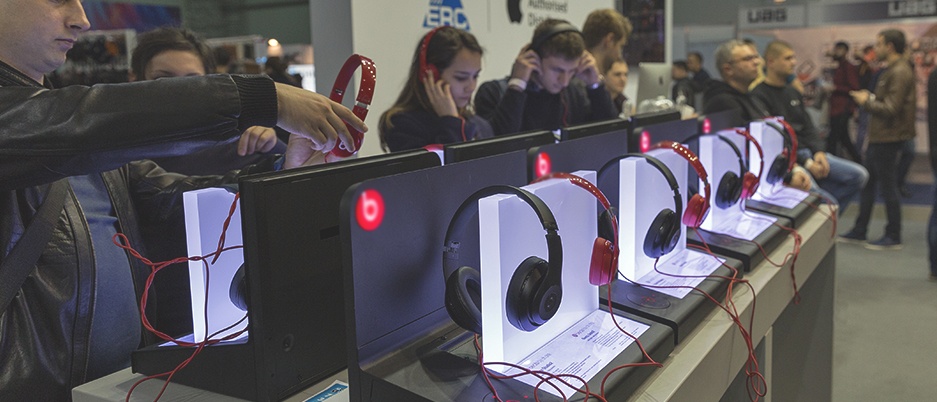
How to Integrate Product Sampling Successfully
Good old product sampling! It’s everywhere, and it’s possibly one of the most effective forms of experiential marketing. But it’s moved beyond snack samples at your local grocery store. There is a lot we can learn from the tried-and-true practice when putting together an experiential campaign.
Product sampling is, arguably, the core of experiencing a brand, and it’s still around because it drives sales by as much as 2,000%. What we love about product sampling is that it can be applied to any product, to any channel, and is a must-have for any product launch.
The psychology and reasoning are sound: Once consumers try something they like, they’re more likely to purchase. After all, people are creatures of habit, and naturally resistant to change. We won’t risk buying something new because it means going through a buyer decision process that can be time consuming and more stressful than simply not fulfilling the desire or need for a new product.
92% of consumers will try a product sample source
Sampling campaigns are now featured in retail where experiences have in some instances replaced in-store shopping. For online-only products and brands with dwindling brick-and-mortar locations, pop-up stores featuring targeted products are now the norm. Studies have found that in retail, sampling is almost always more profitable than product displays in-store.
Product samples trigger the reciprocity principle in consumers, instilling a desire to give back to a brand after receiving something free, and also improving their impression of the brand’s trustworthiness. Offering trial-size or sample-size versions of a product around launch will encourage wary newcomers by doing the work of choosing a product to test, potentially hooking new loyal fans of the product.
Brands should take advantage of sampling opportunities at events.
Here’s how to execute product sampling to perfection:
Try (One) Before You Buy
The era of subscription boxes tells the story of companies capitalizing on product sampling. Customers love trying miniature versions so much that they will pay monthly to receive them.
However, sample subscriptions highlight a problem that brands need to avoid: It reintroduces the buyer decision process. Recipients can become overwhelmed by the amount of choices they receive, and may never invest in a full-size product, instead continuing the subscription service. This is great for the service, but not for brands or consumers.
When offering samples with the goal to drive sales, fewer products is better, and one is best.
Survey Says...
It’s important to get details on your audience to understand if they are your ideal customers. Brands that have an active following on social media can get a nice sample group from followers by tweeting out a fun survey to gauge desire, or go traditional and get impressions from current customers.
During or after sampling, make sure you also get a sense of how your experience and product was received. If survey says you’ve got a good egg, it’s time to ask for reviews.
Rate & Review
If you’re looking to increase sales for a targeted product that isn’t time-sensitive or associated with a launch, asking them to review the product on your website or 3rd party site based on their sample experience can improve the chances of full-size purchase. Reviews are a huge driver of sales and website traffic.
Increase traffic by 108%, and sales by 92% with product reviews source
Combine customer reviews with influencer reviews to increase hype around both your event and your product. In the cosmetics industry, YouTube influencers are the go-to for initial sample distribution.
There are a number of tools you can use, like Get Five Stars or Power Reviews to collect, distribute, and publish consumer opinions. Product reviews are proven to increase traffic by 108% and sales by 92%.
Create a Community
Leverage social media and hashtags to facilitate talk around your event, experience, and product. Start chats and talks and live streams to boost chatter. This functions the same way reviews do, but require less of consumers, and makes giving feedback fun and much more natural.
It takes a little more organization brand- or agency-side, but the investment is often well worth it. Taco Bell is only one example of a brand that has fun with its followers on social media, often highlighting videos of its audience trying new products. Its loyal customers are continuously entertained by engaging sassy quips and are always on the lookout for news from the fast food giant that “thinks outside the bun.”
Get Ahead of—and Behind—Launch
Expand the reach of your sampling campaign by targeting your ideal customers and inviting them to your event. Stir interest before the event with planned campaigns that highlight either the excitement or ideas behind the experience, or the benefits of the product, like an engaging Twitter tease.
You might not choose to offer samples at your event if your goal is purely experiential. An option is to collect opt-in information from attendees, and offer discounts or samples online afterwards.
Target Location as Carefully as Audience
The key to creating real desire for a product is to target locations where that product is needed. For example, a sample of a new laundry product might flop in-store, but quite understandably catch on when offered at the gym. Consider your product’s points of influence carefully before deciding on locations to offer samples.
Each product will need a unique strategy behind it to target its audience and points of influence. Before you invest in a comprehensive plan, make sure you have experienced event marketers on your side.
Looking for someone to help launch a product or promote your brand? Promobile Kitchen can help you plan and execute a winning campaign.





